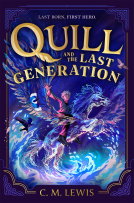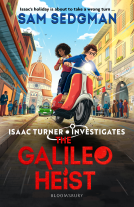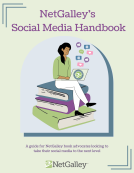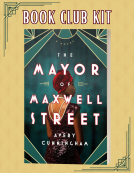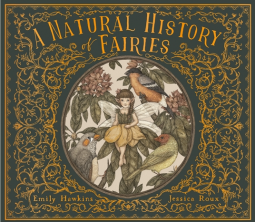
A Natural History of Fairies
by Emily Hawkins
This title was previously available on NetGalley and is now archived.
Send NetGalley books directly to your Kindle or Kindle app
1
To read on a Kindle or Kindle app, please add kindle@netgalley.com as an approved email address to receive files in your Amazon account. Click here for step-by-step instructions.
2
Also find your Kindle email address within your Amazon account, and enter it here.
Pub Date 22 Sep 2020 | Archive Date 6 Oct 2020
Quarto Publishing Group – Frances Lincoln Children's Books | Frances Lincoln Children's Books
Talking about this book? Use #ANaturalHistoryofFairies #NetGalley. More hashtag tips!
Description
This enchantingly illustrated natural history of fairies, compiled in the 1920s by the botanist Professor Elsie Arbour for her niece, is now unveiled for readers of today. Featuring a gold foil–embossed cloth cover, a ribbon marker, and sprayed gold edges, this gorgeous volume is filled with colorful sketches and precise notes detailing the secret life of fairies and their important role in the natural world.
Inside, you will discover the wide and wonderful array of different species of fairies around the globe and explore where and how they live. Delight in this hidden world as you learn all about:
The anatomy of a fairy (Land-based fairies have individual, separated toes, just as humans do. However, many species of water fairies have webbed feet.)
The life cycle of a fairy (When walking in the heather, be careful of the tiny flutterpillar of the Wicklow Fairy, decked out in greens and purples.)
Clever fairy camouflage (Reed fairies living in wetlands usually wear striped clothes to hide among the tall reeds.)
Fairies around the world (Meet the Lily Hopper of sub-Saharan Africa, the Queen Fairy of New Guinea, the Penguin Fairy of the Antarctic, and many more.)
Fairy habitats (Fairies make their homes in all types of places: woodlands, jungles, deserts, the Poles, and even human homes.)
Concluding with a reminder that we must protect the endangered habitats of fairies, and all other creatures too, this is a book to be treasured for a lifetime.
Available Editions
| EDITION | Hardcover |
| ISBN | 9780711247666 |
| PRICE | £20.00 (GBP) |
Average rating from 11 members
Featured Reviews
 Reviewer 672315
Reviewer 672315
As a child, I was absolutely obsessed with fairies. I adored my Cicely Mary Barker collection (which I still have today), and it seems to me that 'A Natural History of Fairies' could easily provoke the same joy and wonder in a child.
Not only is the art beautiful enough to inspire any little girl or boy, but there are nature facts skillfully woven in so that a young reader may learn something about the world. For example, we're informed that fairies have a fused collarbone like that of a bird and that their bones are hollow to allow them to fly, and the author goes into the migratory patterns of certain fairies and birds. Similarly, it's explained how fairies have evolved defences against predators like snakes, foxes, or spiders!
Other well-done aspects worth mentioning is that this book does not solely focus on European fairies, but rather imaginatively designs fairies suited for life in Amazonian, Arctic, or Asian climates. There's such wonderful diversity in skintones for the fairies, too, so that each reader may be able to find a fairy who looks like them - which is what I always did when poring over my Cicely Mary Barker!
Flipping through this lovely book was such a nostalgic experience for me and made me want to go out and explore. For a young child or adult with a sense of imagination, 'A Natural History of Fairies' might well be the perfect gift!
Thank you Netgalley for letting me read this book in return for an honest review.
This is a beautiful book about fairies and their history. The wonderful illustrations show all the different types of fairies, their habitats and how they would live. The book also brings in the animals and how they interact with them. This book brough back how interested I was in fairies when I was a child and it really sparked that interest so I can only imagine how it will be recieved by children. It is a very interesting book full of fantasy and imagination that held my interest and I read the entire thing in one sitting.
Rating
4⭐
Would I read it again:
Yes
Would I recommend it:
Yes
A Natural History of Fairies is a beautiful study of the secret life of fairies. Based on a journal compiled by Professor Elsie Arbour and shared with her niece in the 1920’s, it is a comprehensive guide to these mystical creatures. Covering everything from their appearance to their home, diet, habits, animal companions and enemies, there is so much information to take in! Fairies from all over the world are depicted with incredible, natural beauty. This is the perfect book for anyone who keeps their eyes open for fairies when walking in the woods or sitting in the garden at dusk.
Thank you to Frances Lincoln Children’s Books & NetGalley for the chance to read this gorgeous book!
My thanks to Quarto Publishing Group - Frances Lincoln Children's Books for a temporary digital edition via NetGalley of ‘A Natural History of Fairies’ compiled by Emily Hawkins and illustrated by Jessica Roux.
Publisher: “This enchantingly illustrated natural history of fairies, compiled in the 1920s by the botanist Professor Elsie Arbour for her niece, is now unveiled for readers of today.”
This is a beautifully presented volume that would be ideal for children fascinated by fairies. It is stated as suitable for readers aged 6-10, though I feel that it might also appeal to younger children and could easily be read to them by parents or care-givers.
The hardback volume has a gold foil–embossed cloth cover, a ribbon marker, and sprayed gold edges. It contains many sketches and precise notes that details the secret life of fairies and their important role in the natural world.
Professor Elsie Arbour is a very down-to-earth scientist, who dismisses any aspects of fairies linked to magic or folklore. To her, they are tiny winged mammals with a strong connection to the natural world.
The notebook details her travels throughout the world in search of different types of fairies. There is great diversity in the habitats she visits, moving outside of Europe into various regions including the artic, jungle and desert. She includes entries on their life cycle, feeding, language, and relationship to other creatures as well as other aspects of faerie natural history.
The illustrations are lovely with great attention to detail and a somewhat old fashioned feel to them that creates a sense of the 1920s era.
In a final letter to her niece, Annabelle, Professor Arbour expresses her dismay at witnessing the burning of the Amazon rainforest and the effect that it is having upon the habitats of the rare hummingbird fairies of the region. She suggests keeping the existence of fairies a secret to protect them from curiosity seekers. A hundred years on and one wonders if they can still be found in the quiet places of the world.
An imaginative work that is bound to delight its young readers and hopefully will inspire them to appreciate nature in all its wonder and listen carefully for the flutter of delicate wings.
Readers who liked this book also liked:
We Are Bookish
Historical Fiction, Literary Fiction, Multicultural Interest
